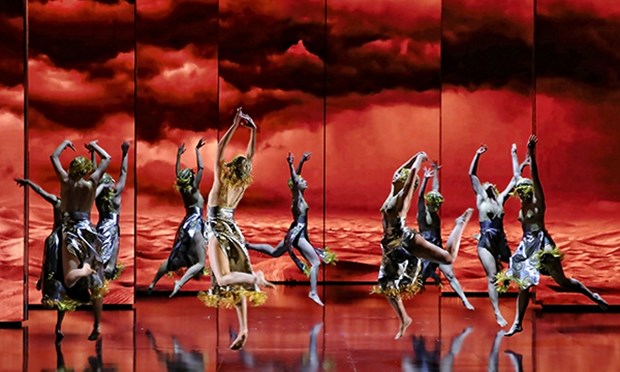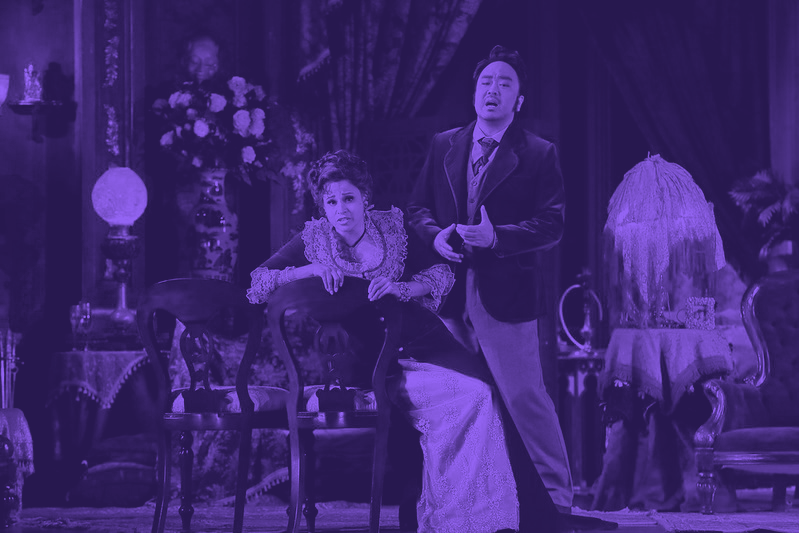
‘Aida’ // Opera Australia
‘Aida’ was glimmering.
Brisbane’s QPAC has become a hub for world-class opera performances as of late, with Wagner’s Ring Cycle drawing international crowds. Alongside this infamous 15-hour-long work, Opera Australia presents their acclaimed production of Giuseppe Verdi’s ‘Aida’, which runs through December and will be presented in a free live-streamed performance on the 11th of December.
Verdi’s “Aida” unfolds against the backdrop of ancient Egypt, centring on a love triangle involving the Ethiopian slave Aida, the Egyptian military commander Radamès, and the princess Amneris. As war looms between their nations, Radamès is chosen to lead the Egyptian army. Unbeknownst to all, Aida is an Ethiopian princess captured in slavery. Torn between loyalty to her homeland and love for Radamès, Aida faces a heartbreaking dilemma. As political and romantic tensions escalate, the opera culminates in a tragic climax, exploring themes of love, duty, and sacrifice against the grandeur of Verdi’s evocative score. ‘Aida’ premiered in Cairo in 1871 and was commissioned to celebrate the opening of the Suez Canal. With a libretto by Antonio Ghislanzoni, the opera captures the otherwordly setting of ancient Egypt. Verdi’s score, blending Italian Romanticism with Egyptian-inspired motifs, reflects his mastery in creating emotional depth. Despite initial challenges due to political unrest in Egypt, the opera triumphed, securing its place as one of Verdi’s masterpieces. The themes of war and vengeance prove most potent for an audience with an eye on the news today.
Direction by Davide Livermore was entirely dazzling. Livermore builds a spectacularly opulent world for the characters and their grand tragedies. Costume design by Gianluca Falaschi must be seen to be believed, drawing upon fantasies of Ancient Egypt and modern textiles that literally sparkle on stage. Complemented by lighting design by John Rayment, the tactile elements of stage design uplift immensely. The physical focal point of the grand stage design was 10 colossal digital screens that moved between scenes. impressive in scale and sometimes gaudy in design by D-Wok, the use of such modern technology works to marry the contemporary artistic vision of the piece with the traditional form of opera. While occasionally distracting from the already intricate action onstage, they came into particular use for the closing images of the work, as the ghostly visions of Radamès and Aida, overcome with white light, enter heaven.
Verdi’s score is rendered magnificent and lush by the Queensland Symphony Orchestra, under conduction by Lorenzo Passerini. The iconic ‘Triumphal March’, performed by musicians on the balcony of the Lyric Theatre was a highlight, working to balance the immense action onstage with genuinely emotionally stirring composition and to build the setting with motif throughout.
The effort to blend modern theatrical technique with Verdi’s classic score is effective to a certain degree. I often found myself wanting to experience triumphant music and impassioned performance without the superfluous video design, but it certainly can be said that the addition of such an element is inventive and highly contemporary.
The love triangle at the centre of this great tragedy becomes an intimate and dangerously passionate affair in the hands of Natalie Aroyan as Aida, Elena Gabouri as Amneris, her rival and enslaver to Aida, and their lover, Diego Torre as Ramadès. Aroyan’s Aida is profoundly empathetic and commanding in an archetype that can easily become helpless to the men around her. With a vocal performance that stunned and soared through the evening, she brought an emotional depth to each revelation within the story. Gabouri was a commanding opposite to Aroyan, shining extraordinarily in the final two acts in which Amneris pleads with Ramadès to save him from certain condemnation. Torre’s rendition of ‘Celeste Aida’ is especially stirring, and remains powerful throughout his performance. Every time he sang the name of his lover, it seemed to reverberate deeper than any other word in the libretto. A particular highlight was Michael Honeyman as Aida’s father, Amonasro. Honeyman was imposing and stood in strong contrast against the extreme wealth around him, an impressive device used by Livermore to conceal the Ethiopian king’s deception.
The chorus, as impressive in size as the rest of the production gave tight and transcendent vocal performances, directed by Narelle French. Another area in which contemporisation worked in the piece’s favour was the addition of an ensemble of dancers, led by choreographer Allie Graham, projecting images of the divine and violent through a blend of modern ballet and structural poses reminiscent of Egyptian iconography.
Something that one would be remiss for not noting in this production is a severe lack of diversity in casting, particularly as this is an Opera set in Egypt, with Ethiopian principal characters.
I wonder if our national opera should reflect the growing emphasis on diversity that permeates our playhouses and galleries in 2023. Undoubtedly, Aroyan is a spectacular Aida, but casting African artists in African roles would have delivered the tragedy in a far more authentic manner. It calls the function of this glimmering spectacle in the wider arts ecosystem into question.
Opera Australia’s rendering of ‘Aida’ for the 21st century will satisfy lovers of the genre looking for acutely technical and captivating performance, and wider audiences with its spectacle and opulent design, but leaves much to the imagination for more progressive theatre-goers.
‘Aida’ performs until Saturday, 16 December 2023 at Melbourne’s Her Majesty’s Theatre. For more information about the production, or to book tickets, visit Opera Australia’s website.






